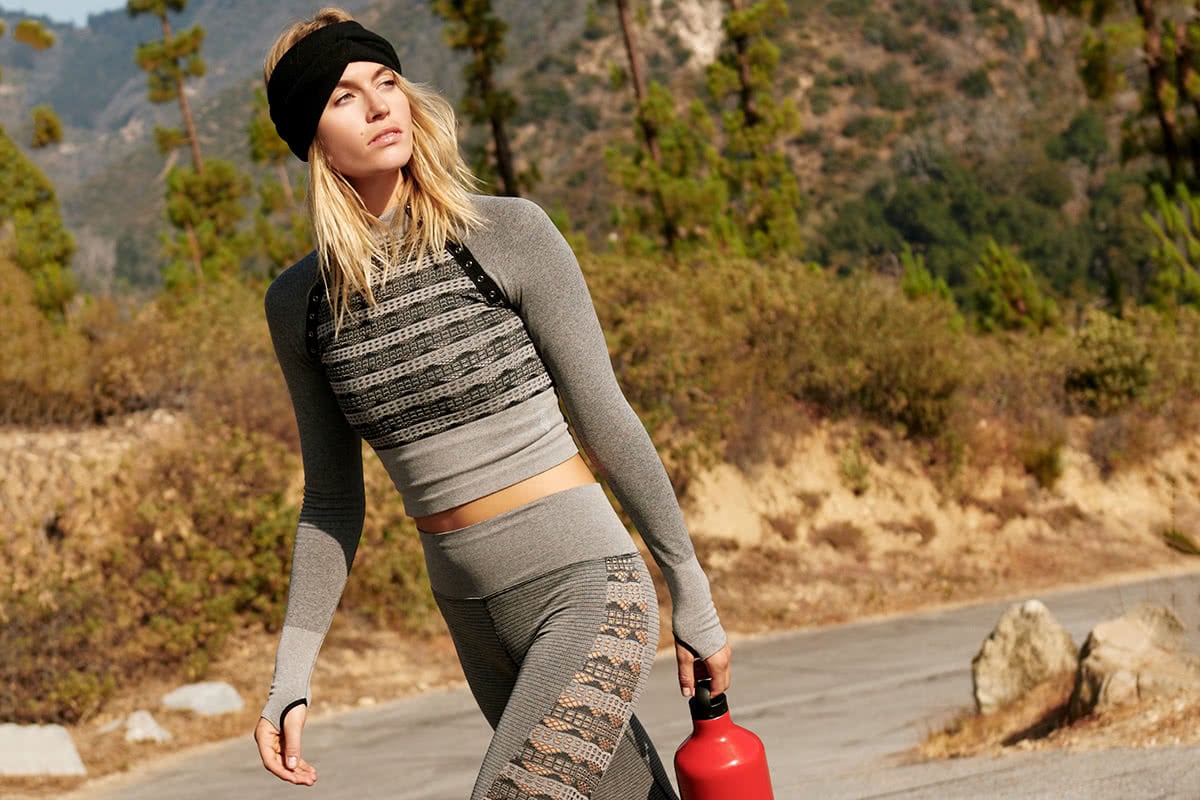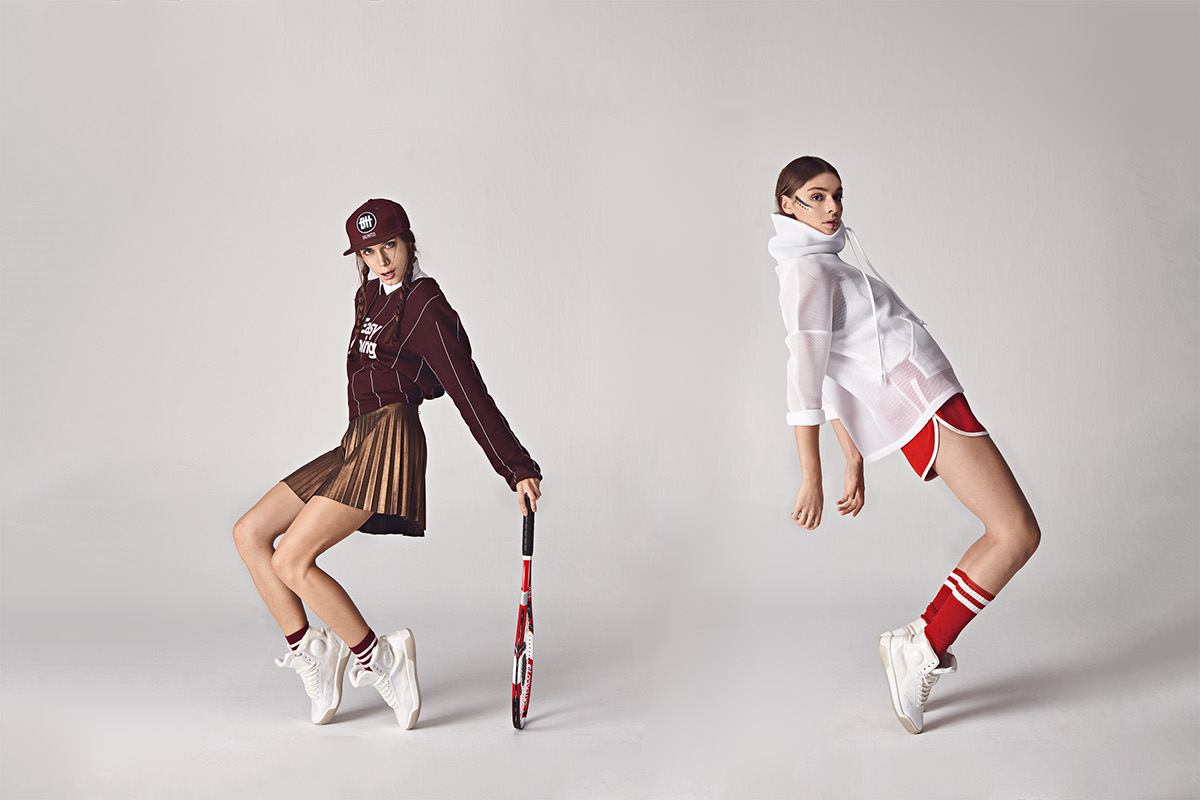In the ever-evolving tapestry of global style, sportswear fashion has transcended its utilitarian origins to become a dominant force, blurring the lines between athletic performance and everyday elegance. What was once confined to gyms and playing fields now graces runways, city streets, and high-fashion editorials, dictating trends and reflecting a pervasive cultural shift towards comfort, functionality, and an active lifestyle. This isn’t just about athletic apparel; it’s a sophisticated fusion of cutting-edge technology, ergonomic design, sustainable practices, and aesthetic appeal. The constant flow of sportswear fashion updates ensures a dynamic and exciting industry, pushing boundaries in material science, design philosophy, and consumer interaction. This comprehensive article delves into the transformative journey of sportswear, exploring its historical ascent, the latest design innovations, the influence of technology, the embrace of sustainability, and its profound impact on personal style and the broader fashion landscape. We’ll unveil why “athleisure” is no longer a fleeting trend but a fundamental pillar of modern dressing.
The Evolution of Comfort

The journey of sportswear fashion is a fascinating narrative of practical necessity evolving into pervasive style, marking a significant cultural shift towards comfort and versatility.
Historical Milestones in Sportswear’s Rise:
- Early 20th Century: Functional Beginnings: Sportswear’s roots lie in garments designed purely for athletic performance. Early examples include simple cotton jerseys for running, wool knits for cycling, and canvas shoes for tennis. Comfort and freedom of movement were the sole priorities, with aesthetics being secondary. This era saw the emergence of brands like Converse and Champion, focusing on durability and utility.
- Mid-20th Century: Post-War Casualization: The post-World War II era saw a gradual shift towards more casual dressing. Innovations like stretch fabrics (e.g., Lycra, introduced in 1958) began to appear, improving athletic performance and comfort. Iconic designs like tracksuits gained popularity, extending beyond the field into casual wear, influenced by athletes and emerging pop culture.
- 1970s & 80s: The Fitness Boom and Celebrity Influence: The fitness craze of the 70s and 80s, fueled by aerobics, jogging, and gym culture, propelled sportswear into mainstream fashion. Celebrity endorsements from athletes and movie stars (e.g., Jane Fonda, Michael Jordan) made tracksuits, sneakers, and leggings desirable fashion statements. Brands like Nike, Adidas, and Reebok rose to prominence, blending performance with aspirational style.
- 1990s: Hip-Hop Culture and Streetwear Integration: The 90s saw sportswear become intrinsically linked with hip-hop culture and the burgeoning streetwear movement. Baggy tracksuits, oversized hoodies, and iconic sneakers became symbols of urban cool, cementing sportswear’s place as a cultural staple, far removed from its original athletic context.
- 2000s & 2010s: The “Athleisure” Explosion: This decade marked the true ubiquity of sportswear. Advancements in moisture-wicking, breathable fabrics (like those developed for active performance) made these garments comfortable enough for all-day wear. The concept of “athleisure” – athletic apparel worn as everyday fashion – took hold, driven by busy lifestyles, a focus on wellness, and the comfortable yet stylish appeal of yoga pants, premium sneakers, and sleek jackets. High-fashion designers began incorporating sportswear elements into their collections.
- Today: Hybridity and Performance Luxury: Modern sportswear is characterized by its hybrid nature, seamlessly blending high-performance features with sophisticated design. The market has segmented into performance-focused gear, everyday athleisure, and a growing segment of “performance luxury” where high-end fashion meets advanced athletic functionality, often at premium price points. Sustainability and technological innovation are now key drivers.
Cutting-Edge Design
The latest sportswear fashion updates are defined by an relentless pursuit of integrating sophisticated aesthetics with unparalleled functionality, creating garments that perform flawlessly and look effortlessly chic.
Key Design Trends and Innovations:
- Seamless Construction: This technique minimizes seams in garments, reducing chafing, enhancing comfort, and allowing for targeted compression and ventilation zones. It also creates a sleek, minimalist aesthetic favored in modern activewear.
- Strategic Cut-outs and Ventilation: Designers are incorporating thoughtful cut-outs and mesh panels in high-sweat areas to improve airflow and regulate body temperature, while also adding a contemporary, often asymmetric, visual appeal.
- Modular and Transformable Designs: Garments are designed with versatility in mind, often featuring detachable layers, adjustable elements, or reversible options. This allows for quick adaptation to changing weather or activity levels, enhancing practicality and sustainability.
- Ergonomic Tailoring and Body Mapping: Designs are increasingly tailored to the natural contours of the human body and specific movement patterns. Body mapping technology identifies areas of high friction or heat generation to optimize fabric placement and garment construction.
- Bold Color Blocking and Graphics: While minimalist aesthetics persist, there’s a resurgence of vibrant color blocking, bold graphic prints, and abstract patterns, adding visual excitement and personality to activewear.
- Structured Silhouettes and Architectural Forms: Beyond flowing fabrics, designers are experimenting with more structured, almost architectural silhouettes, giving sportswear a refined, high-fashion edge while maintaining functionality.
- Gender-Neutral and Inclusive Designs: The industry is moving towards more gender-fluid and inclusive sizing, reflecting a broader shift in fashion towards diversity and catering to a wider range of body types.
- Reflective Accents and Luminous Materials: For safety during low-light activities, reflective trims and luminous fabrics are integrated into designs, often in a subtle yet stylish manner, blending utility with modern aesthetics.
Smart Fabrics and Integrated Intelligence

Technology is not just influencing the design of sportswear; it’s being woven directly into the fabric, creating intelligent garments that adapt to the wearer and their environment.
Revolutionary Technologies in Sportswear Fabrics:
- Moisture-Wicking and Quick-Drying Fabrics: These fundamental technologies pull sweat away from the skin to the fabric’s surface, where it evaporates quickly, keeping the wearer dry and comfortable. Recent advancements focus on even faster drying times and better odor control.
- Temperature-Regulating Materials: Fabrics engineered with phase-change materials or advanced insulation properties actively adapt to body temperature, keeping the wearer cool in heat and warm in cold, optimizing performance and comfort across varied climates.
- Compression Technology: Garments designed with targeted compression improve blood circulation, reduce muscle vibration (which can cause fatigue), and aid in faster recovery, enhancing both performance and post-activity well-being.
- Smart Textiles with Embedded Sensors: The future is here. Sensors are being seamlessly integrated into fabrics to monitor vital signs (heart rate, breathing rate), track activity (steps, calories), measure muscle activity (EMG), and even detect posture or form during exercise, providing real-time feedback to the wearer.
- Odor-Control and Anti-Microbial Treatments: Fabrics are treated with silver ions, zinc, or other anti-microbial agents to inhibit the growth of odor-causing bacteria, ensuring garments stay fresher for longer and require less frequent washing.
- Waterproof and Breathable Membranes (e.g., Gore-Tex Pro): Advanced membrane technologies create fabrics that are completely waterproof yet highly breathable, allowing sweat vapor to escape while keeping rain out, essential for outdoor adventure and extreme weather conditions.
- Stretch and Recovery Fabrics: Innovations in elastane blends and fabric construction ensure garments offer maximum freedom of movement and retain their shape even after repeated stretching and washing, ensuring durability and fit.
- UV Protection Fabrics: Tightly woven or treated fabrics provide UPF (Ultraviolet Protection Factor) ratings, offering built-in sun protection for outdoor activities, essential for long-term skin health.
Sustainability as a Core Design Principle
Sustainability is no longer a niche concern; it’s a foundational principle driving the latest sportswear fashion updates, influencing everything from material sourcing to manufacturing processes and end-of-life solutions.
Sustainable Innovations in Sportswear:
- Recycled and Upcycled Materials: Widespread use of recycled polyester (from plastic bottles), recycled nylon (from fishing nets and industrial waste), and upcycled materials (e.g., repurposing discarded textiles) reduces landfill waste and reliance on virgin resources.
- Organic and Natural Fibers: A growing emphasis on organic cotton, hemp, Tencel (from wood pulp), and other natural fibers that require less water, pesticides, or chemical processing compared to conventional alternatives.
- Low-Impact Dyeing Techniques: Moving away from traditional water-intensive and chemical-heavy dyeing processes to more sustainable methods like dope dyeing (adding pigment to fiber solution before spinning) or waterless dyeing, significantly reducing water consumption and pollution.
- Circular Design Principles: Designing garments for longevity, repairability, and ultimate recyclability. This includes using mono-materials (single-fiber compositions) to facilitate easier recycling at the end of a garment’s life, aiming for a closed-loop system.
- Reduced Water and Energy Consumption in Manufacturing: Brands are investing in manufacturing facilities that utilize renewable energy sources, implement water recycling systems, and employ energy-efficient production processes.
- Ethical Sourcing and Fair Labor Practices: Ensuring transparency in the supply chain, guaranteeing fair wages, safe working conditions, and ethical treatment for all workers involved in the production of sportswear.
- Minimizing Microplastic Shedding: Research and development are focusing on new fabric technologies and washing machine filters to reduce the shedding of microplastics from synthetic activewear into waterways.
- Biodegradable and Compostable Materials (Emerging): While challenging for performance wear, research into truly biodegradable or compostable performance fabrics that break down safely at the end of their life cycle is an exciting future frontier.
The Influence Triangle
The ubiquitous presence of sportswear fashion is largely propelled by a powerful influence triangle involving celebrity culture, authentic street style, and the endorsement of high-fashion designers.
The Interplay of Influence in Sportswear Trends:
- Athlete Endorsements: Iconic athletes continue to be powerful arbiters of sportswear trends. Their on-court/field style, signature shoe lines, and collaborative apparel collections directly influence consumer choices and cultural cachet.
- Celebrity Athleisure Adoption: Celebrities (actors, musicians, influencers) are regularly photographed in athleisure wear for casual outings, airport looks, and even red carpet events, normalizing and glamorizing comfortable, athletic-inspired dressing for everyday life.
- Street Style Authenticity: True trends often originate from authentic street style. Athletes, dancers, artists, and subcultures experiment with sportswear, creating unique combinations that then filter up to runways and mass-market brands.
- Designer Collaborations: High-fashion designers collaborate with sportswear giants (e.g., Adidas x Stella McCartney, Nike x Sacai, Louis Vuitton x Supreme). These collaborations blend performance heritage with luxury aesthetics, elevating sportswear’s status and attracting a high-end fashion audience.
- Runway Integration: Sportswear elements are regularly integrated into high-fashion runway collections, from sneakers paired with haute couture to tracksuits reinterpreted in luxurious fabrics, solidifying its position as a legitimate fashion category.
- Social Media Trend Cycles: Platforms like Instagram and TikTok rapidly disseminate trends. Influencers, micro-influencers, and everyday users showcase their sportswear outfits, creating viral moments that accelerate trend adoption.
- The “Drop” Culture: Limited-edition releases of highly anticipated sneakers or apparel collections, often announced with little notice, create immense hype and exclusivity, driving fervent demand and contributing to sportswear’s cultural relevance.
Impact on Personal Style
The ongoing sportswear fashion updates have fundamentally altered personal style, promoting versatile wardrobes that prioritize comfort without sacrificing aesthetic appeal.
Transformative Effects on Personal Dressing:
- The Rise of the Hybrid Wardrobe: Consumers no longer maintain separate wardrobes for athletic activities and daily life. Sportswear seamlessly integrates into everyday casual, smart-casual, and even some formal settings, leading to highly versatile pieces.
- Prioritization of Comfort: The emphasis on comfortable fabrics, flexible fits, and ergonomic designs has raised consumer expectations for comfort in all clothing, influencing mainstream fashion beyond just activewear.
- Active Lifestyle Expression: Wearing sportswear communicates a commitment to health, wellness, and an active lifestyle, acting as a subtle form of personal branding and aspiration.
- Informalization of Dressing: The ubiquity of athleisure has contributed to a broader informalization of dressing codes in many workplaces and social settings, making previously formal attire less common.
- Investment in Performance Pieces: Consumers are increasingly willing to invest in high-quality, technically advanced sportswear, viewing it as an investment in their health and well-being, similar to investing in fitness equipment.
- Personalized and Expressive Style: The vast array of sportswear options allows for greater personalization. Consumers can mix and match brands, colors, and styles to express their individual aesthetic and athletic interests.
- Footwear as a Statement Piece: Sneakers have become much more than just athletic shoes; they are central fashion statements, often dictating an entire outfit’s direction and reflecting personal style and trend awareness.
The Global Marketplace
The global nature of sportswear fashion updates necessitates an understanding of diverse cultural tastes, climate variations, and regional preferences, leading to localized design and marketing strategies.
Global Dynamics in Sportswear Fashion:
- Cultural Adaptations: While global trends exist, brands adapt designs, color palettes, and marketing campaigns to resonate with specific regional cultures and consumer preferences (e.g., modest activewear for certain markets).
- Climate-Specific Innovations: Designs and fabrics are tailored to diverse climates, from ultra-lightweight, breathable materials for tropical regions to advanced insulation and waterproofing for colder, harsher environments.
- Regional Trends and Influences: Local streetwear scenes, specific sports fandoms, and regional fashion influences often give rise to unique sportswear trends that may eventually gain global traction.
- E-commerce and Direct-to-Consumer (DTC) Models: The rise of global e-commerce and DTC models allows brands to reach consumers directly in diverse markets, bypassing traditional retail channels and offering a wider range of products.
- Supply Chain Diversification: Global supply chains for sportswear are complex, involving manufacturing in various countries. Brands are increasingly diversifying these chains to improve resilience, reduce risk, and respond faster to market demands.
- Cross-Cultural Collaborations: Collaborations with international artists, designers, or cultural icons create unique collections that appeal to specific global audiences and celebrate diverse inspirations.
- Influence of Global Events: Major international sporting events (Olympics, World Cups) serve as powerful platforms for brands to showcase new sportswear designs and launch global marketing campaigns.
What’s Next for Sportswear Fashion?
The trajectory of sportswear fashion is one of continuous innovation, driven by emerging technologies, increasing consumer awareness, and a relentless pursuit of both performance and planet-friendliness.
Future Outlook and Emerging Trends:
- Hyper-Personalization and Customization: Advances in 3D printing, AI-driven design, and on-demand manufacturing will enable unprecedented levels of personalization, allowing consumers to customize fit, color, and even performance features.
- Full Integration of Smart Textiles: Seamlessly embedded sensors will become ubiquitous, offering comprehensive, real-time biometric feedback, training guidance, and health monitoring directly from the garment, blurring the line between clothing and wearable tech.
- Bio-Engineered and Regenerative Materials: Research into lab-grown materials (e.g., synthetic spider silk), bio-engineered fabrics, and materials derived from renewable algae or fungi will offer truly sustainable and high-performance alternatives.
- Circular Economy Dominance: The industry will move towards a fully circular economy, with robust recycling infrastructures, garment take-back programs, and materials designed for endless reuse, minimizing waste and maximizing resource efficiency.
- Digital Fashion and Metaverse Integration: Digital sportswear will gain prominence, worn by avatars in virtual worlds or purchased as NFTs. This opens up new avenues for creative expression, brand engagement, and virtual commerce.
- Adaptive and Responsive Materials: Fabrics that can dynamically change properties (e.g., adjust insulation, alter texture, self-clean) in response to environmental conditions or the wearer’s physiological state.
- Increased Focus on Mental Well-being: Sportswear might incorporate features that promote mental well-being, such as embedded haptic feedback for mindfulness exercises or mood-enhancing light therapy.
- Modular and Repairable Design: A stronger emphasis on designing garments that are easily repairable or have modular components that can be replaced, extending product lifespan and reducing waste.
Conclusion
The narrative of sportswear fashion is one of perpetual dynamism, a testament to humanity’s dual desire for peak performance and effortless style. As technology intertwines with design, and sustainability becomes an absolute imperative, the latest sportswear fashion updates are not just dictating what we wear, but how we live – active, connected, and consciously navigating the future. The track has truly become the trend, and its journey of transformation is far from over.



